Matt Pitt of Cranfield University has a deep interest in modelling hydraulic data and is part-way through a fascinating PhD project centred on the ways in which various tillage regimes affect the long-term properties of soil.
“My research aims to assess if non-inversion tillage practices improve water transport in soil during and near saturation – where percolation leads to recharge” explains Matt. “Such improvements (if found) may aid water movement during rainy season to prevent waterlogging, increase recharge to aquifers and reduce water loss off-site.”
Matt’s investigations are taking place in the Southeast of England where climate change and population increases are creating critical environmental and water industry challenges. 32% of the UK’s land is arable and therefore optimising water regulation within agricultural soils is an important factor in securing future water supplies and environmental protection.
Matt continues, “The UK Government’s recent Sustainable Farming Incentive scheme has actively encouraged reduced tillage practices – and any empirical evidence we can find of the long-terms benefits of this approach may help achieve increased adoption.”
His PhD is being partly sponsored by large water supplier Affinity Water who are interested in potentially using Matt’s findings to further enhance their own sophisticated water dynamics/availability modelling.

Project hypotheses
Matt has designed his research to test several hypotheses:
- Non-inversion tillage improves soil structure and enhances hydraulic connectivity to substratum.
- Water movement benefits of non-inversion tillage increase with longer periods of implementation.
- Specialist software can be used to accurately model water movement in soils influenced by tillage practice.
- Upscaling the influence of tillage method to catchment scale can be implemented accurately in process-based distributed hydrological models.
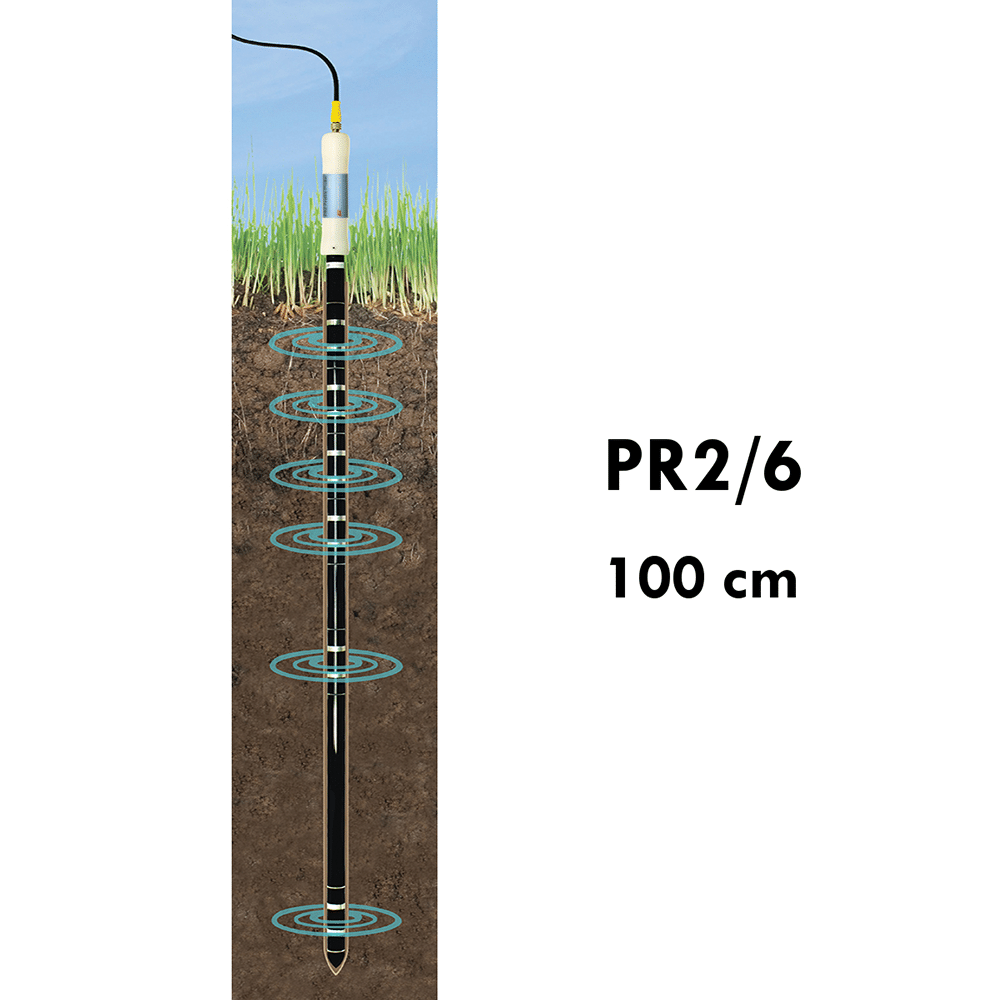
Research approach and the PR2 Profile Probe
To compare the effects of different tillage regimes Matt selected 3 separate Hanslope clay soil farm test sites:
- Field site 1: No-till (Rural Payments Agency definition) for 10 years
- Field site 2: No-till (Rural Payments Agency definition) for 14 years
- Field site 3: conventional moldboard plow
Data collection in field sites commenced early May 2024.
At each site a 4-sided boundary was defined to contain the project measurements and modelling. (fig 1) below shows an aerial view of Field site 2.
The red lines represent the boundaries, the orange lines represent the underground drainage carriers – and the small Xs represent the position of buried PR2 Profile Probe access tubes.
A single PR2 Profile Probe (being logged by a GP2 Data Logger) is permanently installed at each site (green circle) – and a separate PR2 is being used portably to take instant readout measurements every two weeks in the surrounding access tubes to provide additional validation of the core moisture profile measurements.
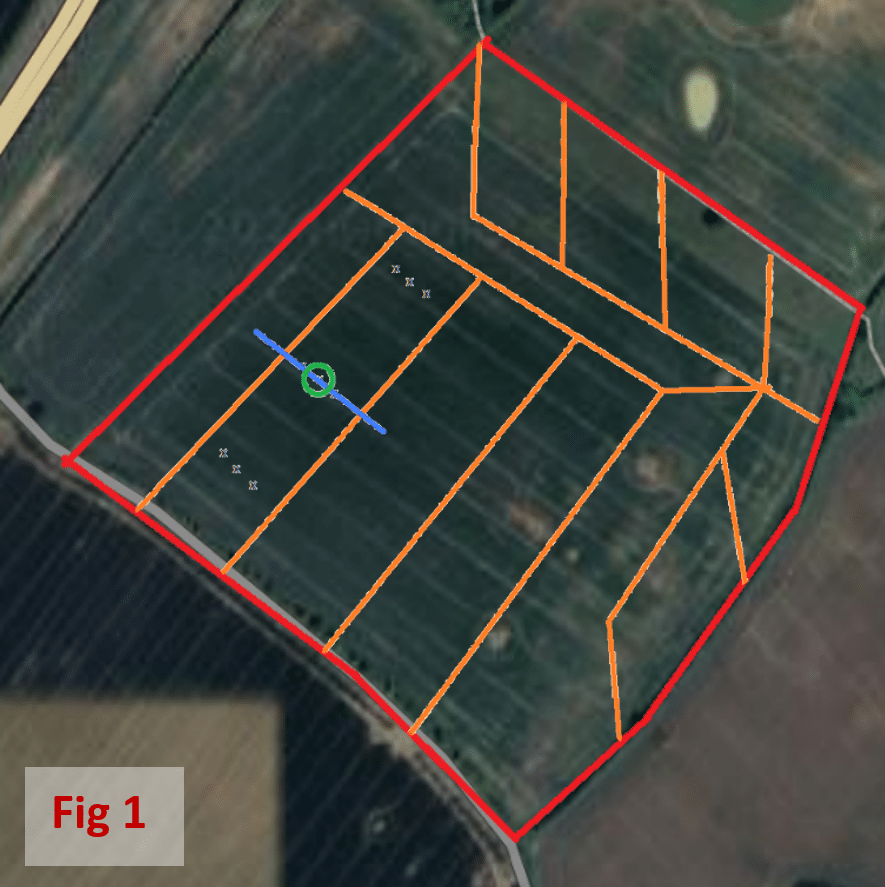
Matt says, “The transect (blue line) deliberately crosses through the drainage carriers because I am focusing on vertical connectivity – and my interest is primarily in 2D drainage profile.”
The permanently installed PR2 is removed from its access tube every month and tested in a known moisture sand table at Cranfield University to confirm maintenance of accuracy.
Matt plans to continue recording a variety of data (including soil texture, porosity, bulk density, volumetric and gravimetric water content, soil water curve and rainfall) from each site over a year-long period.
One field site will then be selected for the upscaling phase of the project to a wider catchment model, based on accuracy of field data.
Matt says, “Physical processes of the local models will need to be “translated” to estimate the influence on broader scales when losing resolution of local processes.”
(Fig 2) below shows how Matt’s soil moisture profile model is displayed in HYDRUS 2D/3D software (not including drainage information).
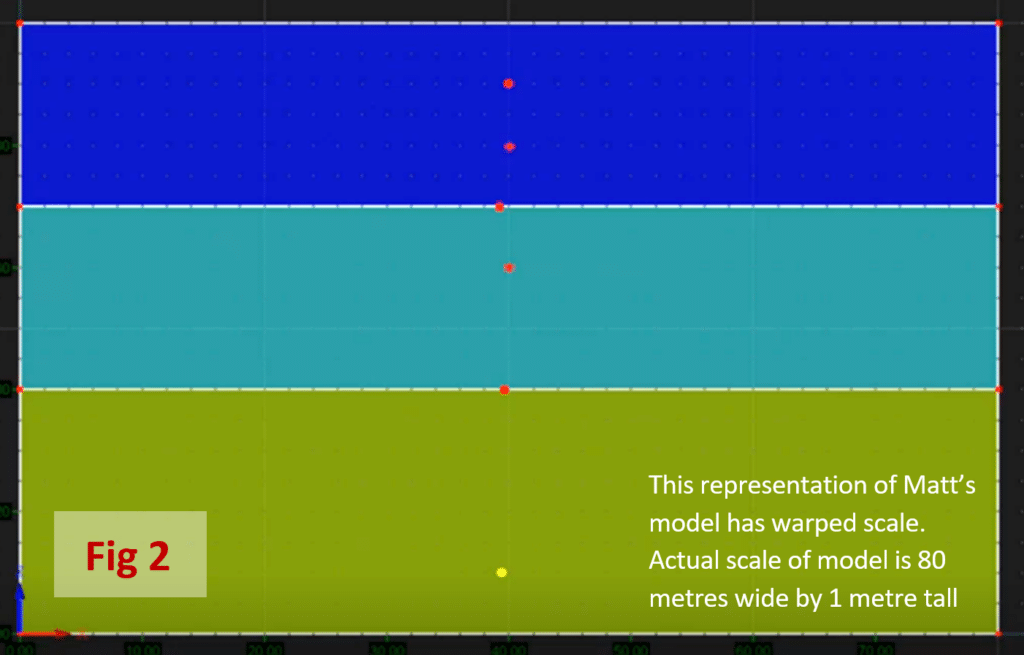
The red and yellow dots represent the 6 measurement point depths of an installed PR2 Profile Probe – against a backdrop of different material profiles.
Example of field data produced by PR2
The PR2 data in (fig 3) below shows averaged topsoil (0-30 cms) and subsoil (40 – 100 cms) moisture measurements for field site 1 (10 years of no-till) & field site 3 (conventional tillage) over a period of three summer months.
Matt says, “You can see from the data that field site 3 is drier at topsoil level than field site 1 – and it dries out faster. The PR2 has helped me to prove that the rate of change is significant and that through the summer period we have seen a clear profile change between the conventionally tilled site and the no-till field site.
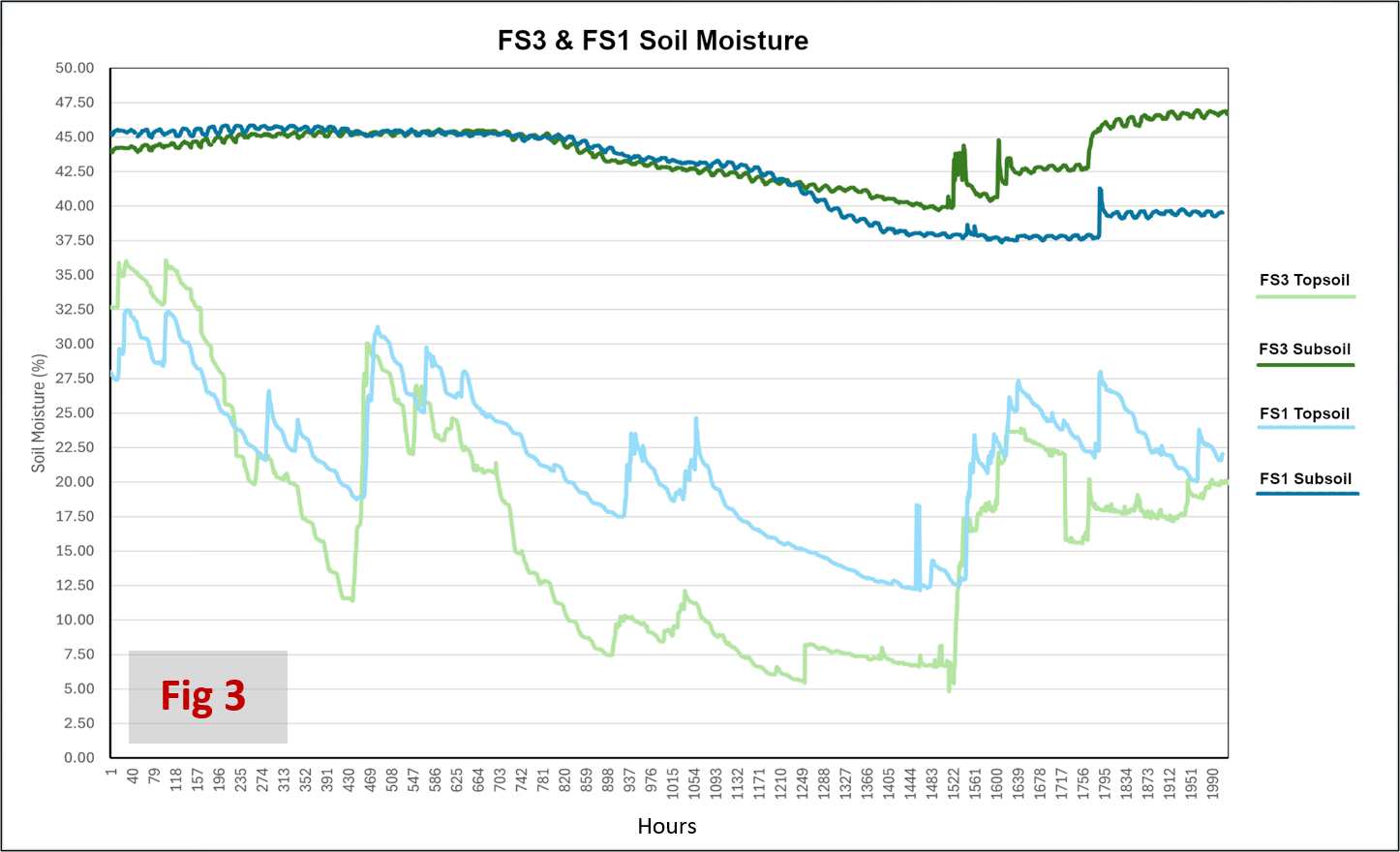
This result is consistent with previous research from other teams into this subject which has indicated that topsoils at no-till sites are notably more effective at holding water (in summer conditions).
However, this change could also be down to the tilled site having better vertical connectivity and thus improved infiltration compared to the no-till site. Until I have completed my modelling, I cannot fully evidence either theory.”
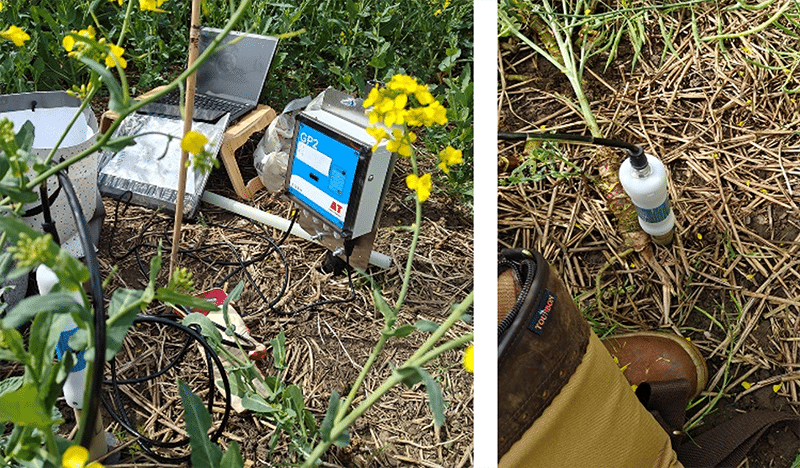
Conclusions
Matt’s PhD project has a long way to run before completion, but in just a few months he has already amassed a large amount of valuable data to power his sophisticated models.
He concludes, “The PR2 has performed really well and has been particularly strong at providing moisture information in the soil fracture domain. It’s enabled me to see very clearly how the moisture profile is changing in the upper sections of soil which has been important.
In terms of the challenge of modelling the bimodal porosity of soils, the PR2 data has given me an excellent indicator of how my system should look – allowing me to successfully calibrate my evolving models where required.
A real strength of the PR2 Profile Probe is that it can be used portably (with instant readout meter) across multiple access tubes. To permanently install data logged PR2s at all of the requisite positions would not be within my research budget.
The only change to my equipment setup I’d consider would be the addition of an ML3 ThetaProbe Soil Sensor buried directly in the topsoil and subsoil, a move that could potentially enhance accuracy of the system even further.”
Visit the PR2 Profile Page here

